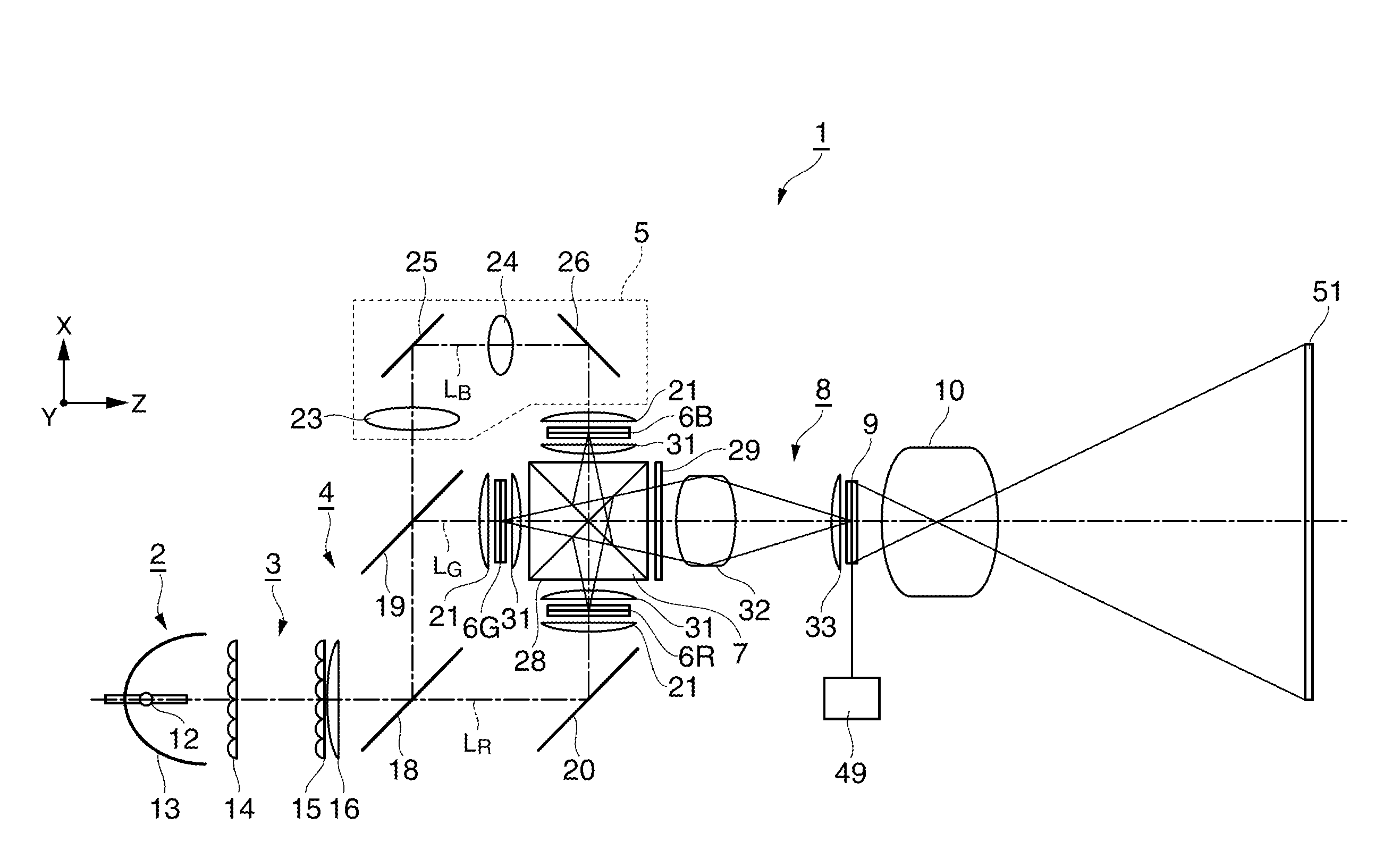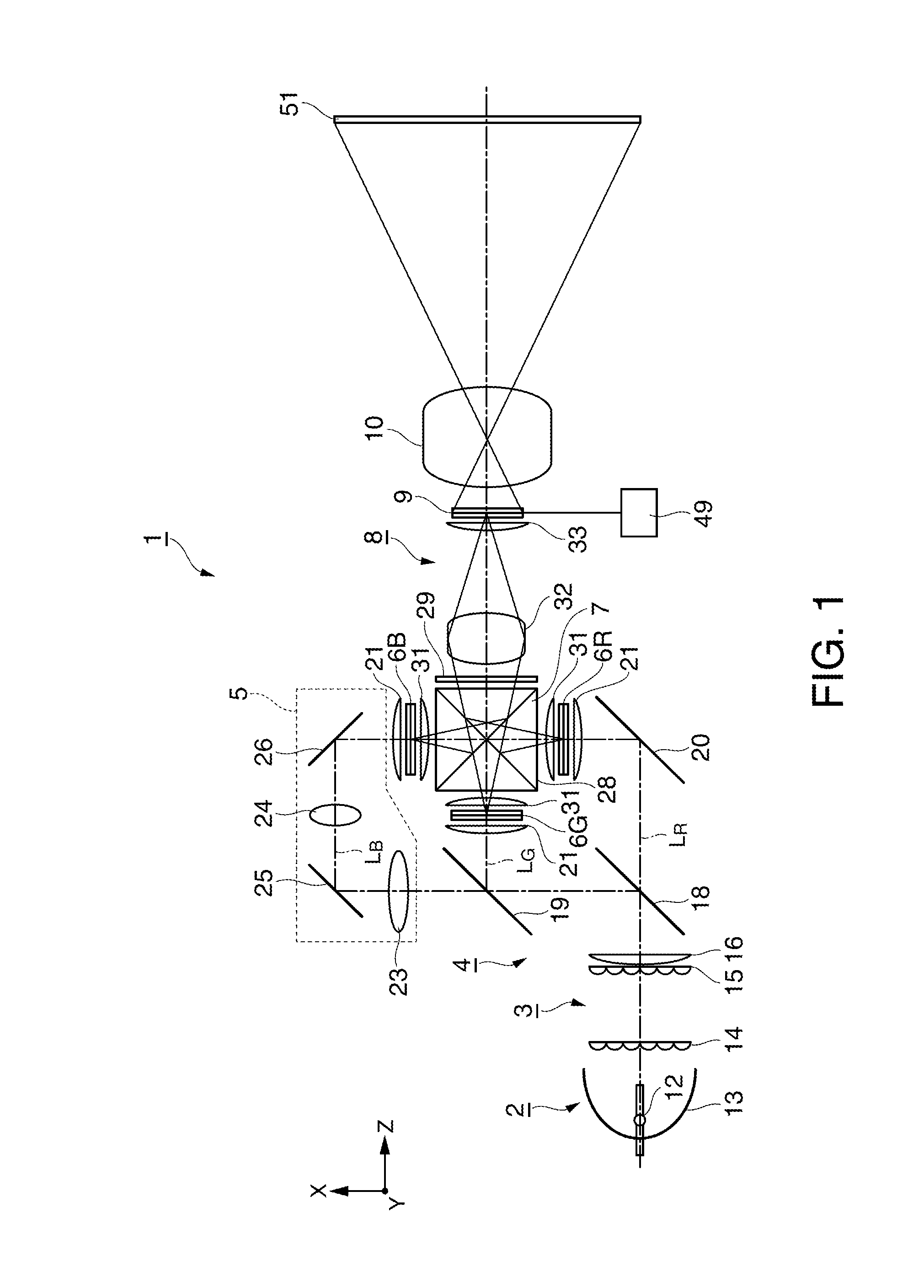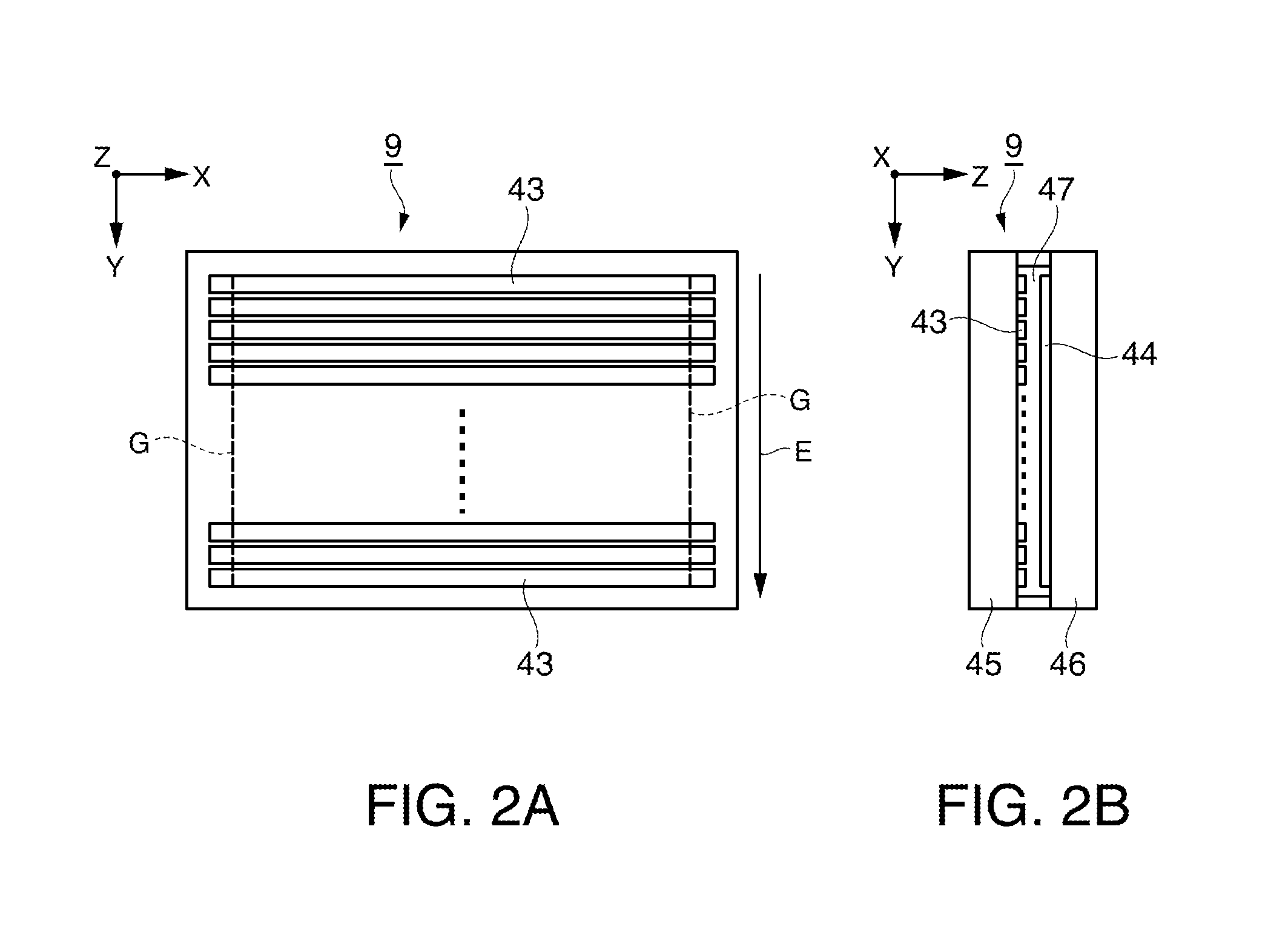Projector
a projector and projector technology, applied in the field of projectors, can solve the problems of reducing the size and usability of the system, the inability of the minute mirror-based light modulator to rewrite image data, and the difficulty of matching the brightness, color tone and other characteristics of displayed images, and adjusting the projection position between the two projectors. , to achieve the effect of high-quality stereoscopic image and increased polarization of polarized light incident on the polar
- Summary
- Abstract
- Description
- Claims
- Application Information
AI Technical Summary
Benefits of technology
Problems solved by technology
Method used
Image
Examples
first embodiment
[0046]A first embodiment of the invention will be described below with reference to FIGS. 1 to 7.
[0047]The present embodiment will be described with reference to what is called a three-panel liquid crystal projector in which three transmissive liquid crystal light valves are used as light modulators. The projector according to the present embodiment writes image data by using a line sequential method.
[0048]FIG. 1 shows a schematic configuration of the projector according to the present embodiment. FIGS. 2A and 2B show a segmented-area polarization switching device in the projector according to the present embodiment. FIG. 2A is a plan view of the device in an xy plane and viewed in a z-axis direction, and FIG. 2B is a cross-sectional view of the device taken along a yz plan and viewed in an x-axis direction. FIGS. 3A to 3C describe the relationship between the segmented-area polarization switching device and image light. FIGS. 4A to 4E show several examples of the configuration of a...
second embodiment
[0095]A second embodiment of the invention will be described below with reference to FIG. 8.
[0096]The basic configuration of a projector according to the present embodiment is the same as that in the first embodiment and only differs therefrom in terms of the way the liquid crystal light valves write image data. A description about this point will be only made.
[0097]FIG. 8 shows a polarization switching device in the projector according to the present embodiment. FIG. 8 is a plan view of the polarization switching device in the projector according to the present embodiment in an xy plane and viewed in the z-axis direction in FIG. 1.
[0098]The first embodiment has been described with reference to the case where the liquid crystal light valves 6R, 6G, and 6B write image data by using a line sequential method. Some liquid crystal light valves, however, write image data by using a point sequential method. The projector according to the present embodiment uses liquid crystal light valves ...
third embodiment
[0102]A third embodiment of the invention will be described below with reference to FIG. 9.
[0103]The first embodiment has been described with reference to the configuration in which transmissive liquid crystal light valves are used as the light modulators, whereas a projector according to the present embodiment will be described with reference to a configuration in which reflective liquid crystal light valves are used as the light modulators.
[0104]FIG. 9 shows a schematic configuration of the projector according to the present embodiment. In FIG. 9, the components common to those in the first embodiment shown in FIG. 1 have the same reference characters and no description of these components will be made.
[0105]In a projector 61 according to the present embodiment, dichroic mirrors 63 and 64, which form a color separation system 62, are provided on the light exiting side of the superimposing lens 16, which forms the optical integration system 3, as shown in FIG. 9. The dichroic mirro...
PUM
 Login to View More
Login to View More Abstract
Description
Claims
Application Information
 Login to View More
Login to View More - R&D
- Intellectual Property
- Life Sciences
- Materials
- Tech Scout
- Unparalleled Data Quality
- Higher Quality Content
- 60% Fewer Hallucinations
Browse by: Latest US Patents, China's latest patents, Technical Efficacy Thesaurus, Application Domain, Technology Topic, Popular Technical Reports.
© 2025 PatSnap. All rights reserved.Legal|Privacy policy|Modern Slavery Act Transparency Statement|Sitemap|About US| Contact US: help@patsnap.com



